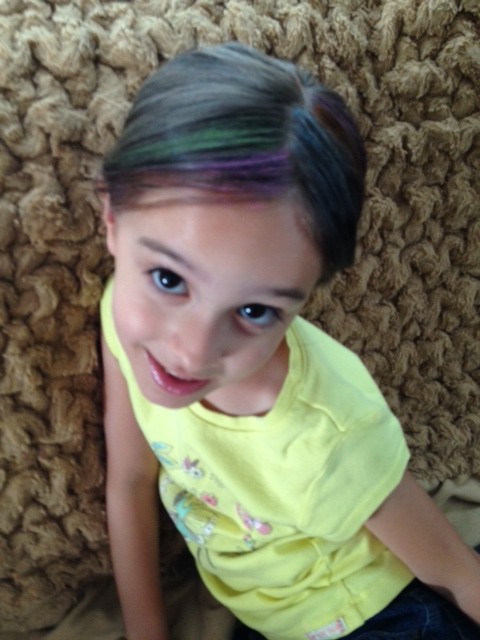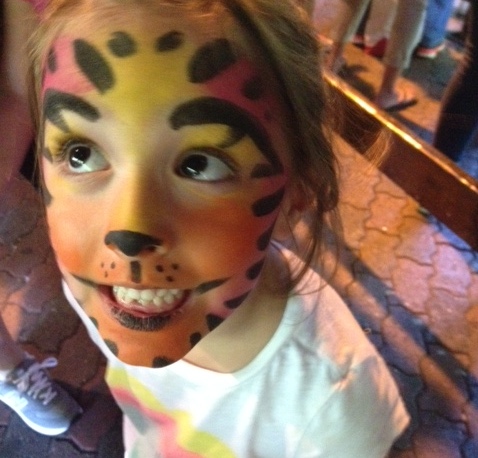How to See My Child's Invisible Disability
There’s that old saying, “Seeing is believing,” and once we’re able to believe in something, we begin to understand it. But some things are hard to see, and in the last six years, I’ve come to realize my daughter’s disability is one of them.
Prior to being diagnosed with ADHD and sensory processing disorder (SPD), my daughter was labeled everything from spoiled to attention-seeking. I was called overreactive and lacking in discipline. When I finally got her diagnosis, I thought I finally had the proof we needed for people to understand her. But even with a diagnosis, I still find people struggling to understand, and that’s because her disability is hard to see — unless you look. Not just glance, but really look.
Here are some of the subtle signs of her disability you might never notice unless you take a good, long look:
If you watch my daughter enter a room, you will notice her eyes dart around trying to take in everything around her. She may walk away and explore, taking inventory of all the things her heightened senses have to process. She may be standing on her toes, stiff and rigid because it’s her body’s natural instinct to be on high alert. If she can tolerate what is around her, she will slowly relax and her body will soften. Her eyes will adjust and become focused on what she’s doing or who she’s talking to.
If the environment is too much for her to process, she may stay close to my side. She is social and friendly, and engaging with peers is often enough of a distraction away from any discomfort from the surrounding environment. If she experiences downtime, her attention often shifts back to the things around her she can’t process.
She will continue to participate but may self-soothe by chewing on her shirt, hair or fingernails. She may ask me for gum because she’s learned it’s a more appropriate way to provide herself the comfort she needs. If she becomes overstimulated, you may notice her talk loud and fast. She might run around, jump or climb on something she isn’t supposed to as an attempt to satisfy the cravings for input that her sensory system needs.
In a group, she’s quick to jump in but may slowly find her way to the outskirts, playing on her own. She will keep herself at enough of a distance so she can blend in without getting too close to any unpleasant sensations. Typically, she can get through most situations successfully, but there are times when she begins to lose hold and, rather than meltdown, she slowly unravels.
You may hear her say she’s hungry or tired. This is her way to disguise that she’s had enough and wants to be removed. She may suddenly start to get frustrated with her peers and complain she isn’t getting her way. This is not a child simply being bossy but a sign that she’s grappling for external control because she’s losing her internal control.
None of these things sound alarming, and separately they aren’t. They are all behaviors that any child may display. But for my child, these behaviors are parts of a disorder that can disrupt her life at any moment.
She’s learned to make calculated decisions based on her level of tolerance so she can participate in things that may be difficult for her. There are some environments she’s learned to tolerate because we’ve had to expose her to uncomfortable situations little by little so she can build an immunity to the sensations that alarm her. If she does eventually meltdown, it will be long after you see her. This is her release from all she has reigned in that particular day.
At the age of 6, my daughter has learned enough about her disorder that is appropriate for her age so she can be confident in who she is and how she feels. She’s worked hard to manage the role her disability plays in her life. It may be small and subtle, but it can get big and loud. It takes a lot of energy for her to reign supreme against her body’s natural “fight-or-flight” reaction to her environment.
There are millions of people in the world who live with an invisible disability, and I believe my daughter is one of them. These are people who struggle with something that isn’t easy to see on the outside. They have to consciously manage this extra set of needs just to get through the average day. That’s a large responsibility for anyone, especially a child. Some days are better than others and, when they struggle, they are easily misjudged. They are also the people who don’t always get the support and acceptance they need from others to be successful and confident with who they are.
Everyone wants to be embraced for all they are, the good and the bad. Yet we’re all guilty of judging something simply because we don’t understand it. So, in writing this, I hope we can open our eyes to our own challenges, and in turn open our eyes to the differences in others. As my daughter puts it, we all have our “tricky thing.” Her’s is SPD, and she’s OK with that. So am I, and although you may not fully understand it, we hope you are, too.
Follow this journey on My Sensational Girl.
The Mighty is asking its readers the following: What’s one secret about you or your loved one’s disability and/or disease that no one talks about? If you’d like to participate, please send a blog post to community@themighty.com. Please include a photo for the piece, a photo of yourself and 1-2 sentence bio. Check out our “Share Your Story” page for more about our submission guidelines.


